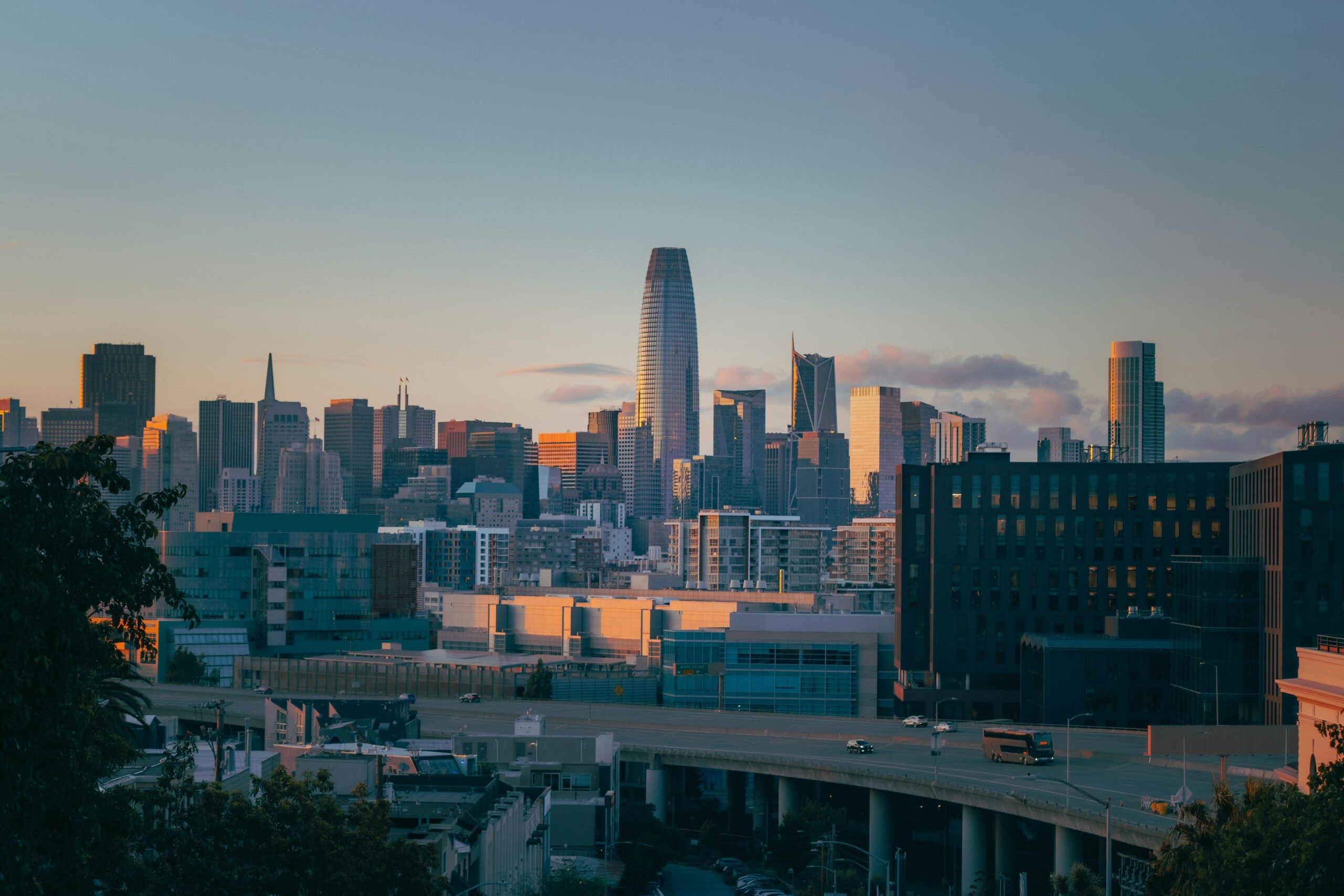Exploring all 50 states is a rare feat, but for seasoned traveler Emily Hart, it revealed one truth: many hyped destinations truly live up to their reputations. From natural wonders to iconic urban parks, these seven attractions deliver experiences that justify the crowds. Below, we dive deeper than most travel articles—uncovering each site’s history, insider tips, logistical essentials, and nearby gems—so you can plan a trip that’s both memorable and seamless.
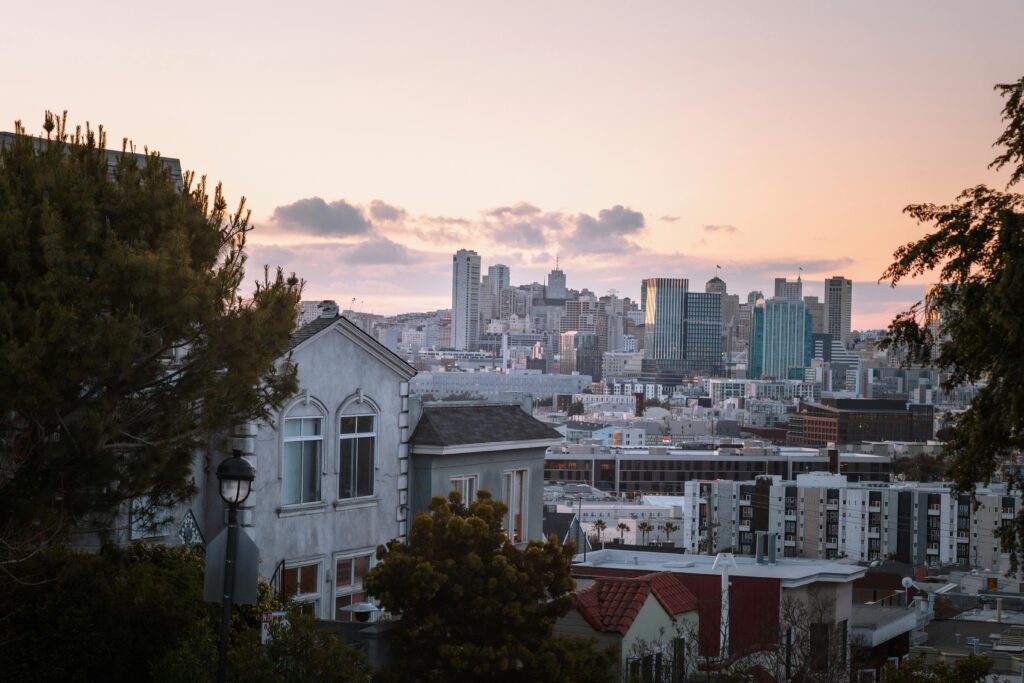
1. The Presidio of San Francisco (California)
Why It’s Worth the Hype
Once a Spanish fort, then a U.S. Army post, the Presidio now functions as a National Park Service site that blends history, nature, and stellar views of the Golden Gate Bridge. Its 1,500 acres include restored military barracks, ancient eucalyptus groves, and secluded shoreline trails.
What the Article Missed
- Hidden Historical Gems: The Presidio Officers’ Club (built 1776) offers rotating exhibitions on California’s Spanish, Mexican, and American eras. Don’t miss the Museo Tribu gallery, which showcases local Indigenous art and histories.
- Trail Highlights: While most visitors gravitate to Crissy Field and the Golden Gate Overlook, trek the Batteries to Bluffs Trail for sweeping coastal panoramas and remnants of military batteries hidden among cypress trees.
- Presidio Tunnel Tops: Opened in 2022, this half-mile park atop the decommissioned Doyle Drive tunnels features picnic lawns, a groves of native oaks, food kiosks (try the Presidio Yurt Café), and rotating art installations. It’s a calmer alternative to the often-crowded Lombard Street or Fisherman’s Wharf.
- Birdwatching and Ecology: Birders can spot snowy plovers, ospreys, and peregrine falcons along the tidelands at Crissy Field. Join a free “Crissy Field Marsh” guided walk on weekends (check the park’s online calendar).
Practical Tips
- Getting There: Muni buses (lines 28, 29, 30) and Golden Gate Transit routes serve the Presidio. Consider the free PresidiGo shuttle, which circulates between Union Square, the Embarcadero, and key Presidio spots.
- Parking and Timing: Parking is scarce near the Main Post—arrive before 10 AM on weekends. Otherwise, park at the Lombard Gate Visitor Parking lot (free for up to four hours) and catch the PresidiGo or walk 15 minutes to the Visitor Center.
- Recommended Duration: Allocate at least half a day—more if you plan to picnic, rent a bike (from Parkwide Bike Rentals), or tour the Walt Disney Family Museum (tickets $25 adults).
- Best Season: Late spring (May–June) balances mild weather and fewer summer fogs. Fall (September–October) offers clear skies and late-blooming wildflowers.
2. Old Faithful, Yellowstone National Park (Wyoming)
Why It’s Worth the Hype
Old Faithful is arguably the world’s most reliable geyser—erupting roughly every 90 minutes—shooting scalding water up to 180 feet into the air. It’s only one of over 10,000 thermal features in Yellowstone, which spans three states (Wyoming, Montana, Idaho).
What the Article Missed
- Thermal Geyser Basin: Beyond Old Faithful, explore the Upper Geyser Basin for other noteworthy features—Castle Geyser (sonorous eruptions every 13–15 hours), Grand Geyser (tallest predictable geyser), and Riverside Geyser (streams of water cascading into the Firehole River).
- Visitor Center Insights: The Old Faithful Visitor Education Center houses interactive displays on volcanic activity. Catch a short film about Yellowstone’s supervolcano under the theater dome.
- Snowcoach and Winter Access: During winter (December–March), road closures turn Old Faithful reachable only by snowcoach or snowmobile. Few tourists venture here then, making early-morning eruptions feel almost private. Plus, the silvery steam plumes look otherworldly against snowy backdrops.
- Geyser Prediction App: The National Park Service has a free “Yellowstone Geysers” app that uses algorithms and ranger observations to predict nearby eruptions with 5–10 minute accuracy. Download it before you arrive, as cell service is spotty.
Practical Tips
- Timing Eruptions: Old Faithful’s current eruption interval is between 90 and 110 minutes; plan to arrive at least 15 minutes beforehand to stake out a good viewing spot. Each eruption lasts 1.5–5 minutes, so stay alert.
- Dining and Lodging: The historic Old Faithful Inn (completed 1904) puts you a two-minute walk from the geyser. Rooms fill a year in advance; consider Old Faithful Snow Lodge or other park lodges if booking late. The Geyser Grill and Snow Lodge Geyser Grill offer casual fare, while the Old Faithful Inn Dining Room serves upscale (and pricy) bison and trout entrées.
- Safety: Boardwalks can be slippery—wear sturdy shoes. Keep at least 23 feet from thermal features; rushing water can cause third-degree burns.
- Recommended Duration: If Yellowstone is your sole destination, budget three to four days to see Old Faithful plus Grand Prismatic Spring, Hayden Valley wildlife viewing, and Lamar Valley wolves and bison.
- Best Season: Late May–June for fewer crowds, wildflowers, and active wildlife. July–August sees peak visitation; use sunrise/early morning slots to beat midday crowds.
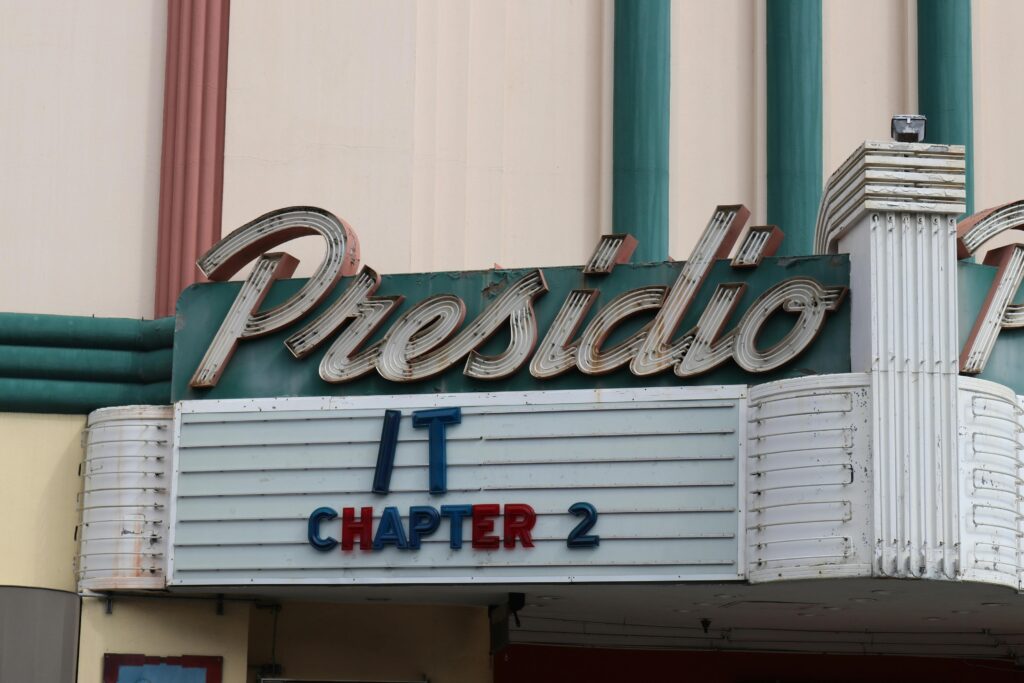
3. The French Quarter, New Orleans (Louisiana)
Why It’s Worth the Hype
The French Quarter—also known as Vieux Carré—touts vibrant Creole architecture, live jazz, legendary cocktails, and a centuries-old culinary scene influenced by French, Spanish, African, and Caribbean cultures. It’s as much a living neighborhood as it is a tourist draw.
What the Article Missed
- Hidden Palaces: Beyond Bourbon Street’s neon buzz, seek out the Pontalba Apartments (built 1850) flanking Jackson Square, or the Gallier House (1857), a restored Creole townhouse now a museum of antebellum life.
- Music Outside Bars: The Preservation Hall (726 St. Peter Street) requires pre-purchase tickets (around $25) for intimate acoustic jazz concerts—no cameras, no talking. For impromptu sidewalk performances, stroll through Royal Street between St. Louis and Conti; triages of street performers, from brass bands to buskers on upright bass.
- Culinary Side Streets: Famed spots like Café du Monde (beignets) and Antoine’s (Oysters Rockefeller) draw lines, but do not overlook local legends: Liuzza’s by the Track (po’boys and gumbo off Elysian Fields), Coop’s Place (andouille sausage coolers on Decatur Street), or a muffuletta at Central Grocery on Decatur and Ursulines.
- Bienville’s Excavations: In 2023, archaeological digs on Bienville Street unearthed pre–Louis XIV artifacts hinting at early colonial trading posts. A small exhibit in the Historic New Orleans Collection Museum on Royal Street displays some finds—worth a quick detour for history buffs.
Practical Tips
- Navigating Taxis vs. Streetcars: For a classic experience, take the Canal Street–Bourbon Street St. Charles “flowermobile” streetcar (2 tickets for $1.25 each). Ubers/Lyfts fill fast during Mardi Gras season (Feb–March).
- Safety After Dark: Remain on well-trafficked streets; stick to groups. Frenchmen Street (one block north of the Quarter) offers live music without Bourbon Street’s wilder antics.
- Festivals Beyond Mardi Gras:
- French Quarter Festival (April): Showcases 20 spinning stages of local acts—much of it free.
- Satchmo SummerFest (August): Jazz tribute to Louis Armstrong—scrumptious po’boys and second-line parades.
- Recommended Duration: Two full days let you absorb architecture, historical tours (e.g., under-the-radar LaLaurie Mansion, Jackson Square walking tour), daytime café culture, and evening jazz. Extend to three days if you want swamp sunrise tours or a late-night voodoo-history walking tour.
- Best Season: Early November–mid-December balances mild temperatures (60–70°F), fewer mosquitos, and pre-holiday events (40th Annual Holiday Season Traditions Tours often include live brass performances in hidden mansions).
4. Grand Canyon National Park (Arizona)
Why It’s Worth the Hype
Carved by the Colorado River over six million years, the Grand Canyon spans 277 miles in length, up to 18 miles in width, and over a mile deep. Its layered bands of red rock tell a geological story dating back 2 billion years. Views from the South Rim (elevation 7,000 feet) reveal sweeping panoramas, while the North Rim (elevation 8,000 feet) offers a quieter, higher-altitude experience.
What the Article Missed
- Geological Time Lapse: Junior Ranger programs provide kids (ages 4–12) a “time-travel” badge: completing booklets that explain ancient Vishnu Schist (2 billion years old) at the bottom of the canyon versus Kaibab Limestone (270 million years old) at the rim. Adult interpretive talks clear up misconceptions—like why the canyon’s layers appear horizontal rather than vertical on cliff faces.
- Hidden Viewpoints:
- Lipan Point: Often crowded at sunrise, but offers views of Colorado River bends and Toroweap Valley.
- Shoshone Point: Requires a one-mile round-trip walk off Hermit Road—no railings, just raw cliff edges perfect for sunrise/birdwatching; fewer visitors venture here.
- Cape Royal (North Rim): Accessible seasonally (May–October), it offers the most dramatic panorama, including Florida River entering the canyon.
- Hiking Alternatives:
- South Kaibab Trail to Cedar Ridge: A 3-mile round-trip (1,120 feet descent) for views without the crowds of Bright Angel.
- Hermit’s Rest Overlook: Four easy overlooks connected by shuttle—ideal for families.
- Stargazing and Dark Sky Status: Grand Canyon is a designated Dark Sky Park. Rangers host nightly “Star Parties” at Mather Point (South Rim) with telescopes; Milky Way arcs visible from all rims on clear summer nights.
- Weather Variability: The South Rim in summer can hit 80°F–90°F, while the river mile down (at Phantom Ranch) can reach 110°F. Meanwhile, the North Rim remains 15–20 degrees cooler. Always check radar (monsoon storms can produce dangerous downpours and flash floods in July–September).
Practical Tips
- Shuttle Services: Summer weekends restrict private vehicles on Desert View Drive and Hermit Road (March–November). Use park shuttles to reach overlooks.
- Permits for Overnight Hiking: Backpack permits for the corridor between Bright Angel Trail and South Kaibab fill six months in advance; check recreation.gov on the first minute of the 16th of each month.
- Mule Rides: From March–October, mule rides to Phantom Ranch fill a year ahead; morning rides avoid midday heat.
- Recommended Duration:
- Day Trip: Minimum of 6 hours—arrive at sunrise, drive Desert View Drive stopping at Moran, Grandview, and Navajo Points; catch sunset at Hopi Point.
- Multi-Day: Two nights at Bright Angel Lodge or Maswik Lodge (South Rim) lets you hike to Plateau Point or head to the North Rim lodges for a distinct perspective.
- Best Season:
- Spring (March–May): Wildflowers bloom along Bright Angel Trail; fewer crowds.
- Fall (September–November): Crisp air, colorful aspen at higher elevations, and clear views post-monsoon.
5. Central Park, New York City (New York)
Why It’s Worth the Hype
Central Park—843 acres at the heart of Manhattan—provides a verdant oasis amid skyscrapers. Completed in 1876, it was the first landscaped public park in the U.S. Its designers, Frederick Law Olmsted and Calvert Vaux, envisioned a democratic space where all New Yorkers, regardless of income, could experience nature and recreation.
What the Article Missed
- Architectural Follies and Hidden Gems:
- Belvedere Castle: Overlooks Turtle Pond and offers free telescope views of the Ramble. Once a weather station, it’s now home to the Henry Luce Nature Observatory (volunteer naturalists on weekend mornings).
- Conservatory Water: Model-boat pond where you can rent compass-guided sailboats; view the Alice in Wonderland sculpture nearby.
- Swedish Cottage Marionette Theatre: A log-cabin–style building (originally a drill-hall), hosting puppet shows since 1947. Perfect for families with kids under 10.
- Specialty Gardens:
- Shakespeare Garden: Planted with flora mentioned in the Bard’s works—includes Kentucky bluebells, English yew, and Canterbury bells—marked with Shakespearean quotes.
- Morse Rock Garden: Near Fifth Avenue, a small, less-visited spot with interlocking rock arrangements and benches—ideal for quiet reflection even on crowded weekends.
- Sports and Recreation:
- Rowboats at the Loeb Boathouse: Available seasonally (April–November), row for $20/hour (single boat) or $30/hour (two-person) and watch herons on the lake.
- Ice Skating: Wollman Rink operates November–March—skates rent for $20, and the ice is maintained by Zambonis.
- Shakespeare in the Park: Free summer performances by The Public Theater at Delacorte Theater (visit publictheater.org for free tickets via electronic lotteries).
- Culinary Stopovers:
- The Plaza Food Hall (59th St at Fifth): Gourmet food stalls (Perrine’s Pasta, Durum) for a quick bite before a park picnic.
- The Loeb Boathouse Café: Seasonal veranda dining overlooking the lake—reserve at OpenTable in spring.
Practical Tips
- Guided Tours: Sign up for a free Greeter walking tour (NYC’s Mayor’s Office program) on weekends to learn about Central Park’s hidden statues and Civil War–era tunnels. For architecture enthusiasts, the Central Park Conservancy offers a $10 “Architecture and Landscapes” tour focussing on Olmsted & Vaux’s design influences.
- By Bike or Foot: Bicycle rentals ($15/hour) available near West 72nd Street and East 96th Street entrances; for pedestrians, follow marked “Pedestrian Loops” (five-mile or six-mile loops).
- Avoiding Crowds: Early mornings (6–8 AM) and late afternoons (4–6 PM) see fewer joggers and dog-walkers. The Ramble (birdwatching hotspot) fills by 7 AM on spring weekends—so arrive before sunrise if you want solitude.
- Recommended Duration: A half-day (3–4 hours) covers Bethesda Terrace, Bow Bridge, Ramble, and North Woods. A full day (~7 hours) lets you visit Belvedere Castle, the Conservatory Garden (north end), the Zoo at 64th St, and Strawberry Fields near 72nd Street.
- Best Season:
- Spring (April–June): Cherry blossoms around the Loeb Boathouse and Great Lawn.
- Fall (September–November): Maple and oak trees blaze orange and red; ideal for photographers.
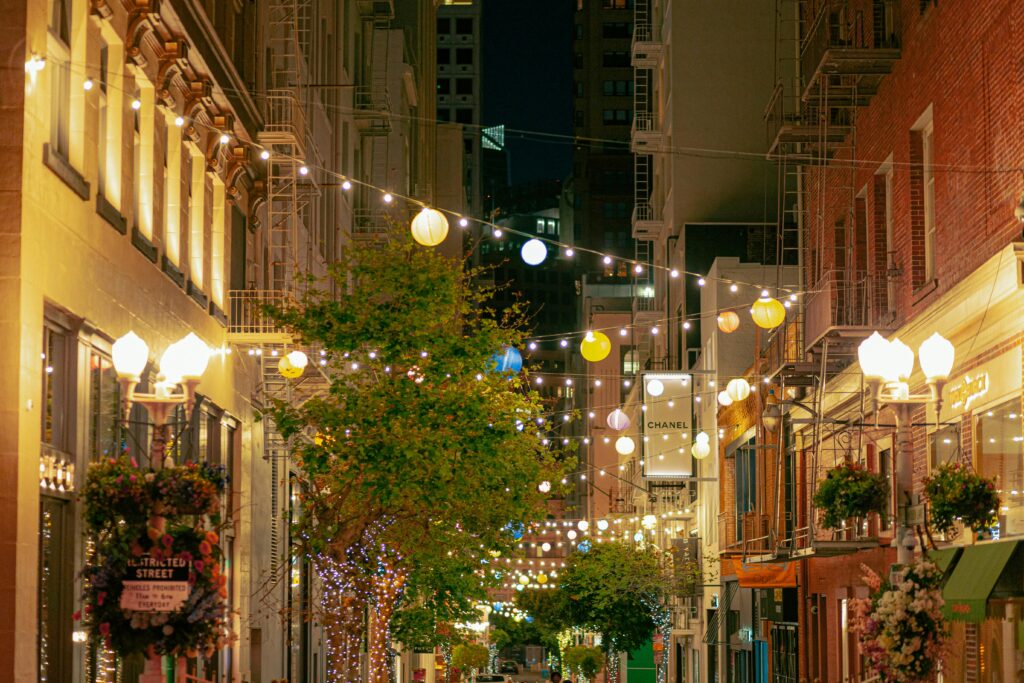
6. Garden of the Gods (Colorado Springs, Colorado)
Why It’s Worth the Hype
Garden of the Gods—named by the 1859 surveyor Rufus Cable—features towering sandstone formations that glow red at sunrise and sunset. The 1,367-acre park, donated by Charles Elliott Perkins to the city (with the stipulation that “it must forever remain free to the public”), sits at the eastern end of the Rocky Mountains and offers panoramic views of Pikes Peak.
What the Article Missed
- Geological Storyline: The park’s distinctive red rock comes from Fountain Formation sandstone (Pennsylvanian era, 300 million years ago). Look for evidence of tilted strata, cross-bedding, and fossilized ripple marks. Guided “Geology in the Garden” tours are free on weekends—rangers explain how the Laramide orogeny uplifted these rocks to 9,000 feet.
- Recommended Trails and Activities:
- Central Garden Trail: A 1.5-mile paved loop (wheelchair-accessible) weaving among the largest formations—Balanced Rock, Cathedral Spires, and Kissing Camels.
- Siamese Twins Trail: A half-mile out-and-back leading to a natural rock window with a view of Pikes Peak beyond.
- Rock-Climbing Routes: The park allows free, non-guided rock-climbing on designated formations (permit required). Beginners can join Colorado Mountain School’s certified-instructor sessions.
- Wildlife and Ecology: Mule deer, red-tailed hawks, and wild turkeys roam the park. Early mornings (6–9 AM) offer the best wildlife sightings—carry binoculars for spotting mountain bluebirds and golden eagles in the Ponderosa pines above.
- Park Programming: During the summer solstice, the park hosts free “Sunrise Yoga at Balanced Rock” classes ($10 suggested donation). In winter, guided “Snowshoe Hikes” on weekends introduce cross-country gear and local snowpack conditions.
Practical Tips
- Hours and Fees: Open daily from 5 AM to 10 PM. Parking ($25 per vehicle, valid 3 days) can be paid via the smartphone app or at kiosks. The Visitor & Nature Center entry is free; museum exhibitions have a $5 suggested donation.
- Best Viewing Times: For sunrise, park at Lot 1 (west side) by 5:30 AM; Balanced Rock and Cathedral Spires glow in the morning light. Sunset hunters prefer Lot 3 (east side) or Lot 1—arrays of hoodoos reflect golden hues.
- Nearby Dining and Lodging:
- Garden of the Gods Market & Café: Gourmet coffee, pastries, and picnic supplies adjacent to the Visitor Center.
- Rock Ledge Ranch Historic Site: Book a catered ranch picnic or participate in farm-to-table tours on weekends.
- Lodging: The Broadmoor (luxury resort) sits three miles south, offering shuttles; budget-friendly options include cabins at Cheyenne Mountain State Park (seven miles away).
- Weather Considerations: Afternoon thunderstorms are common June–August—plan hikes before noon. Always carry layers; temperature swings can be 30°F between sunrise and midday.
- Recommended Duration: Half a day (3–4 hours) covers main overlooks and the Visitor Center. A full day lets you hike the more strenuous Palmer Trail (6 miles) to Helen Hunt Falls, blending park views with mountain trails.

7. Route 66 (Chicago, Illinois to Santa Monica, California)
Why It’s Worth the Hype
“America’s Main Street” or “The Mother Road,” Route 66 spans 2,448 miles through eight states (Illinois, Missouri, Kansas, Oklahoma, Texas, New Mexico, Arizona, California). Established in 1926, it symbolized freedom, opportunity, and post–Dust Bowl migration westward. Although officially decommissioned in 1985, its nostalgic motels, neon signs, vintage diners, and historic landmarks keep its spirit alive.
What the Article Missed
- Multiple Alignments: Route 66 underwent five major alignments between 1926 and 1978; choosing a modern path depends on how much “original” 1920s/’30s pavement you want to experience versus roadside Americana.
- Illinois Segment: Starts at Adams Street and Michigan Avenue in Chicago. Early stops include Gem City Bowl (Joliet) and Ambler’s Texaco Gas Station in Dwight (circa 1933).
- Missouri’s Route 66: Drive the chain of iconic “66 Blue Whale” (Catoosa) in Oklahoma, then on to Texas’s Cadillac Ranch near Amarillo—a field of half-buried Cadillacs (initially 10; now five remain).
- Arizona Range: Don’t miss the Wigwam Motel in Holbrook (stay in a cement teepee), Meteor Crater near Winslow (impact site 50,000 years old), and the pebbled stretch of original two-lane paving at Oatman.
- Official Route 66 Museum Network: Each state offers a museum with local history:
- Illinois: Route 66 Hall of Fame & Museum (Pontiac)—live reenactments of 1940s–’50s diners.
- Oklahoma: Route 66 Interpretive Center (Pontotoc County)—interactive displays on oil boom towns.
- New Mexico: New Mexico Route 66 Museum (Santa Rosa)—preserved neon motel signs and 1930s gas pumps.
- California: Route 66 “Mother Road” Museum (Barstow)—snag the 1:6 scale replica of Roy’s Motel & Café landmark sign.
- Modern Preservation Efforts: Organizations like the National Historic Route 66 Federation sell “Adopt-a-Hundred Miles” kits—paint-friendly heritage panels and DIY neon kits—to help volunteers maintain deteriorating signs and facades.
- Route 66 Festivals:
- June’s “International Route 66 Mother Road Festival” in Springfield, Missouri—classic-car parades, pin-up contests, and 1950s rockabilly acts.
- September’s “Historic Route 66 Car Show” in Barstow—150+ vintage vehicles and swap meets for automobilia.
Practical Tips
- Timing Your Road Trip: Many travelers tackle Route 66 in two to three weeks, averaging 200–250 miles per day. Spring (April–May) avoids summer heat in the Southwest; fall (September–October) brings milder weather. Winter travel (November–March) requires caution—northwest segments can see snow and ice.
- Navigation Nuances: GPS often pulls you onto modern highways. Use dedicated “Historic Route 66 Road Atlas” or apps like “Route 66 Guide” that mark original pavement, neon signs, and road closures. In rural stretches—especially in Texas’s “Ghost Town” sections—plan fuel stops carefully; some stretches exceed 120 miles without gas stations.
- Signature Stops Worth Detouring:
- World’s Largest Route 66 Sign: At Jubitz Truck Stop in Portland, Oregon (not on the original alignment but a nod to the route’s mythos).
- Chain of Rocks Bridge (St. Louis, Missouri): Walk or bike 1.7 miles across the Mississippi River on the old Route 66 alignment—now a pedestrian path.
- Cadillac Ranch (Amarillo, Texas): Bring spray paint ($2 per can at Amarillo souvenir shops) to tag your own messages.
- Standin’ on the Corner Park (Winslow, Arizona): The Eagles’ “Take It Easy” lyric come to life; live country bands often perform on summer evenings.
- Santa Monica Pier End: A concrete “End of the Trail” sign, close to the Route 66 “Historic” marker, is a must-stop for crowds and classic-car photos.
- Lodging in Retro Style:
- Munger Moss Motel (Lebanon, Missouri): A 1940s–’50s neon icon—you can still order milkshakes at the on-site diner.
- El Rancho Hotel (Gallup, New Mexico): Once hosted John Wayne films crews; rooms decorated with movie memorabilia.
- Wigwam Village Motel No. 6 (Holbrook, Arizona): Sleep in teepee-shaped concrete wigwams for around $60–$80 per night.
- Recommended Duration: Ideally two to three weeks to fully appreciate the length, but enthusiasts often tackle just the Midwest (Chicago–Oklahoma City) or the Southwest (Oklahoma City–Santa Monica) in a week each.
- Best Season:
- Late Spring (May): Wildflowers in Oklahoma prairies, milder canyon temperatures in Arizona.
- Early Fall (September): Clear skies, fewer monsoon-driven storms in the Southwest.
Frequently Asked Questions
Q: Which of these attractions is best for families with young children?
- Central Park (NYC): Kid-friendly playgrounds, carousel rides, zoo exhibits, and hands-on nature centers.
- Garden of the Gods (CO Springs): Short, accessible trails and rock formations kids can clamber on (with supervision).
- Presidio (San Francisco): Free junior-ranger programs, open lawns, and safe bike paths.
Q: Are any of these sites free to enter?
- Presidio of San Francisco: Entire park is free; some attractions (Walt Disney Family Museum) charge admission.
- Central Park: Fully free to enter; certain attractions (Zoo, Conservatory Garden) may have separate fees.
- Garden of the Gods: Free entry and parking ($25 per vehicle donation suggested).
- Route 66: Driving the historic route is free; however, some museums and preserved motels charge fees.
Q: What’s the best way to avoid crowds at these major attractions?
- Presidio: Visit on weekday mornings (before 10 AM) or explore lesser-known trails like Batteries to Bluffs.
- Old Faithful: Take in a sunrise eruption or opt for winter visits via snowcoach.
- French Quarter: Wander early on weekday mornings; skip Bourbon Street after 10 PM in favor of live music venues on Frenchmen Street.
- Grand Canyon: Drive East Rim (Desert View) for fewer viewpoints, or head to North Rim in summer.
- Central Park: Early mornings on weekdays; target north end (Conservatory Garden) for solitude.
- Garden of the Gods: Hike the backcountry Palmer Trail at dawn; avoid weekends in summer.
- Route 66: Avoid driving through major cities (e.g., Chicago, Los Angeles) during rush hour. Embrace small-town detours for tranquil stretches.
Q: Do I need advance reservations or permits?
- Old Faithful (Yellowstone): No permit for viewing, but lodging inside the park must be reserved 9–12 months ahead. Backcountry permits required for overnight hikes.
- Grand Canyon: Backcountry permits (six months before desired date); helicopter tours require separate FAA clearance.
- Presidio: No permits needed for hiking; special events (e.g., weddings in Crissy Field) require a park permit.
- French Quarter: No permits to stroll; buskers need a permit if playing amplified music.
- Central Park: Filming or large group events need permits from NYC’s Department of Parks & Recreation.
- Garden of the Gods: Rock climbers need a free daily permit (available at visitor centers).
- Route 66: No driving permits—some states (especially in Texas) require an “antique license plate” to park certain vintage vehicles along the route, but casual visitors are unaffected.
Q: What should I pack for each destination?
- Presidio: Layers (San Francisco microclimates), sturdy walking shoes, windbreaker, reusable water bottle.
- Old Faithful/Grand Canyon: Moisture-wicking layers, wide-brim hat, sunscreen, hiking boots, daypack with snacks and 2–3 liters of water.
- French Quarter: Breathable fabrics, comfortable walking shoes (cobblestone streets), mosquito repellent, evening attire for jazz venues.
- Central Park: Sneakers, picnic blanket, map or app, backpack with snacks, sun hat.
- Garden of the Gods: Trekking shoes, layered clothing (temperatures shift rapidly), binoculars, camera with zoom lens for wildlife.
- Route 66: Road atlas or GPS with historic route overlays, first-aid kit, paper maps for dead zones, camera, reusable cooler for roadside picnics.
Q: Are these destinations accessible for travelers with limited mobility?
- Presidio: Major trails like the Bay Area Ridge Trail have wheelchair-accessible segments; the Presidio Tunnel Tops and Main Post are ADA-compliant.
- Old Faithful: The boardwalks around the Upper Geyser Basin are paved and wheelchair-friendly; shuttle buses have wheelchair lifts.
- French Quarter: Sidewalks can be uneven; many restaurants and bars have steps—plan ahead by calling ahead or using street-level entrances.
- Grand Canyon: The South Rim has multiple accessible viewpoints (Mather Point, Yavapai Point); shuttle buses and some lodging are ADA-compliant. The North Rim is less accessible due to steep terrain.
- Central Park: Paved loops (Central Park Drive, Reservoir path) are mostly wheelchair-accessible; many restrooms have ADA stalls.
- Garden of the Gods: Central Garden Trail and most overlook parking areas are ADA-friendly; rentable motorized scooters available at the Visitor Center.
- Route 66: Accessibility depends on individual stops; iconic motels may not have elevators—call in advance to verify.
Q: How do I maximize my experience without breaking the bank?
- Free Walking Tours (Presidio, French Quarter, Central Park): Utilize volunteer-led tours—tips appreciated.
- CityPass and National Park Pass: The New York CityPASS (for Central Park–adjacent attractions) and America the Beautiful Pass ($80 annual) cover all federal lands, including Yellowstone and Grand Canyon entry fees.
- Cook or Picnic: For sites like the Presidio, Central Park, and Garden of the Gods, pack a picnic to avoid overpriced concession stands.
- Off-Season Deals: Many park lodges (Yellowstone, Grand Canyon) offer reduced winter rates. Similarly, Corktown Airbnb hosts in Detroit drop prices around June opening of Michigan Central.
Q: Are guided tours or traveling independently better?
- Guided Tours excel for historical insights, safety assurances (especially in Yellowstone), and hassle-free logistics—ideal if your time is limited or if you prefer expert narration.
- Independent Travel gives you flexibility and freedom to linger where you please. Renting a car (Yellowstone, Grand Canyon, Garden of the Gods) or using public transit (Presidio, Central Park, French Quarter) can be more economical if you research in advance.
Q: What precautions should I take regarding wildlife and natural hazards?
- Yellowstone/Grand Canyon: Always carry bear spray if hiking off main trails (Yellowstone—grizzly country). Stay at least 100 yards from bears and wolves, 25 yards from other wildlife. In the Canyon, heatstroke is a concern—hike early and carry extra water.
- Garden of the Gods: Rattlesnakes are common in summer—watch your step and keep to marked trails.
- Central Park/French Quarter: Urban wildlife (raccoons, rats) can approach if you feed them—keep food sealed. In New Orleans, watch for flooding or minor street closures after heavy rains.
- Presidio: Ticks in eucalyptus groves (Lyme disease risk)—wear long pants, check for ticks after hikes.
Conclusion
From the windswept cliffs of the Presidio to the red-rock spires of the Garden of the Gods, these seven attractions offer more than postcard snapshots—they invite you to delve into history, geology, culture, and natural wonder. By combining insider knowledge—hidden trails, budget strategies, optimal seasons—with practical logistics—parking, permits, safety guidelines—you’ll transform a crowded “tourist” spot into a truly personal adventure. Whether you’re a first-time visitor or a repeat explorer, these destinations remind us why some places deserve every ounce of their hype—and how to experience them in a way that’s both unforgettable and respectful.
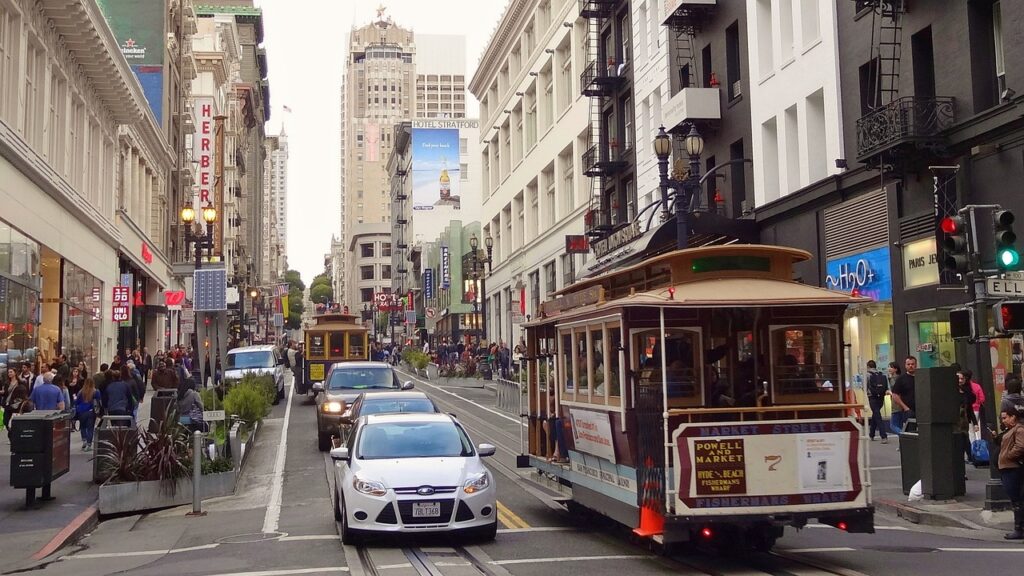
Sources Business Insider
